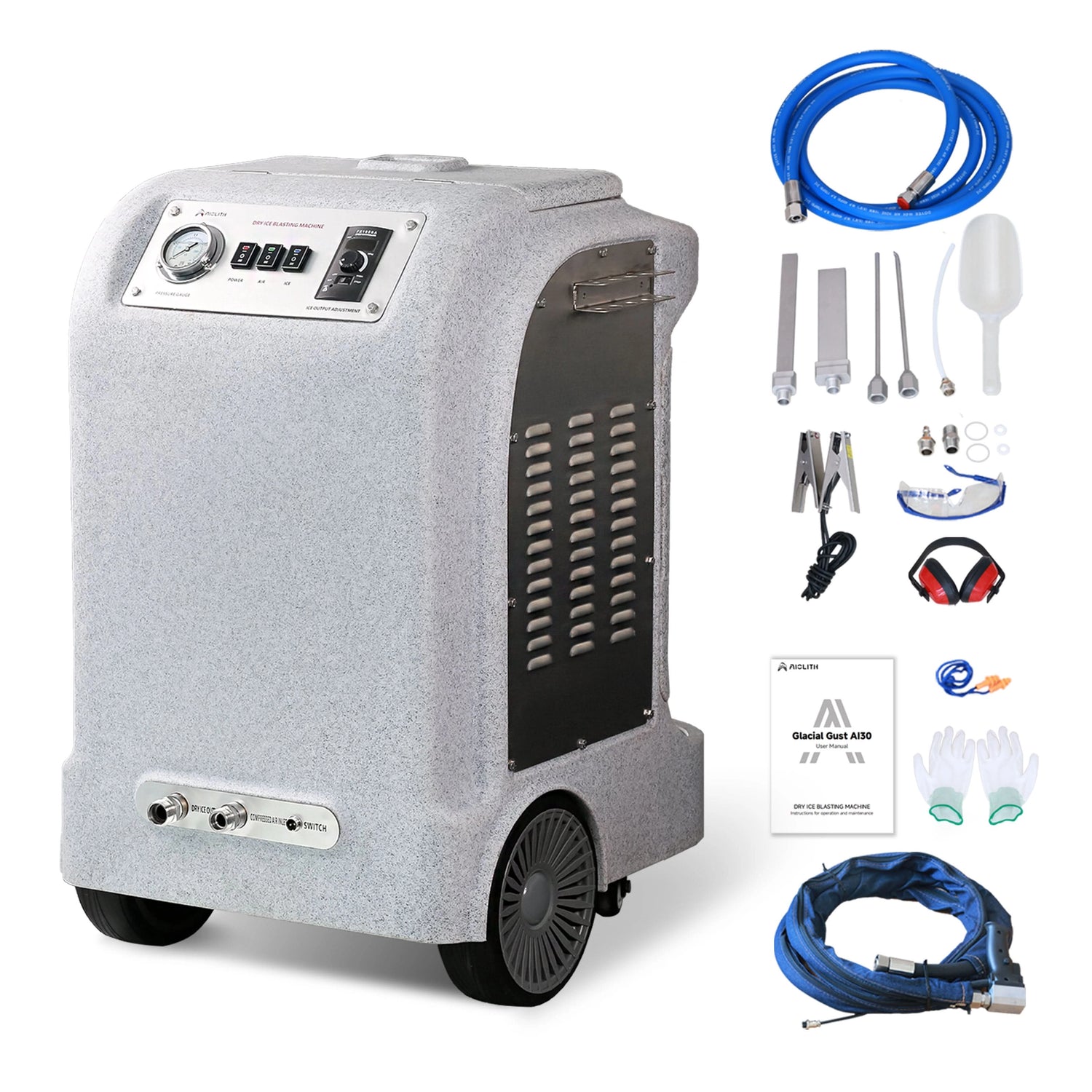Rotary Floor Buffer Ultimate Guide: 15 Powerful Insights for Spotless Floors
Share
Rotary Floor Buffers: The Ultimate Guide to Polishing & Maintenance
Rotary floor buffers are essential equipment in the world of commercial and industrial floor care. Unlike floor scrubbers, which focus on deep cleaning using water and detergents, rotary floor buffers primarily polish and maintain the shine of hard floors such as marble, hardwood, vinyl, and terrazzo.
A rotary floor buffer operates by spinning a pad at high speeds, gently buffing away scuffs, dirt, and minor scratches to leave floors looking smooth and glossy. This makes them indispensable for facilities where appearance is critical, such as hotels, hospitals, offices, and retail spaces.
This comprehensive guide delves into everything you need to know about rotary floor buffers—from how they work and key features to look for, to maintenance best practices and selecting the perfect model for your needs.
How Do Rotary Floor Buffers Work?
At their core, rotary floor buffers work by rotating a circular pad on the floor surface at speeds ranging from 150 to 300 RPM (rotations per minute). The spinning action, combined with the right pad and polishing compounds, buffs the floor to remove surface imperfections and restore shine.
- Pad Attachment: Different pads (e.g., soft polishing, aggressive stripping, or general scrubbing) are attached to the buffer’s rotating plate based on the task.
- Motor Power: A powerful electric motor spins the pad at a controlled speed to achieve the desired effect without damaging the floor.
- Operator Control: Most rotary buffers feature ergonomic "butterfly" handles and controls that allow operators to easily maneuver the machine side-to-side and control the pressure.
- Buffing Action: The rotary motion smooths out minor scratches, scuff marks, and dirt residues, leaving a polished, reflective surface.
Modern rotary floor buffers can be corded or cordless. Cordless battery-powered models offer superior mobility and convenience in large areas without creating tripping hazards.
Key Benefits of Using a Rotary Floor Buffer
Using a rotary floor buffer comes with several key advantages:
- Enhanced Floor Appearance: Buffers restore a brilliant shine, helping maintain a professional and clean look in any commercial setting.
- Surface Protection: Regular buffing extends the life of your floor by preventing wear, reducing scratches, and protecting the top layers of finish.
- Time Efficiency: Buffers can polish thousands of square feet per hour, a task that would be impossible with manual tools.
- Versatility: With a simple change of pads, a single machine can perform stripping, scrubbing, polishing, and burnishing tasks.
- Reduced Labor Fatigue: The powered rotation eliminates the strenuous manual effort required for hand polishing.
- Cost Savings: By extending floor life and reducing damage, buffers help you avoid costly floor replacements or major repairs.
Key Features to Consider When Buying a Rotary Floor Buffer
Motor Power and RPM
A strong motor (typically 1 to 2.5 HP) ensures consistent rotation speeds and effective buffing, especially under pressure. Higher RPM models polish faster but may require more skilled operation to avoid floor damage.
Buffer Pad Types and Sizes
Pads come in a spectrum of colors indicating their abrasiveness—from black stripping pads that remove old finish, to green scrubbing pads for deep cleaning, and white polishing pads that add shine. Sizes typically range from 13” to 20” in diameter; larger pads cover more area but require more control.
Drive System and Maneuverability
Walk-behind buffers with adjustable handles improve operator comfort and control. The machine's weight is also a factor, as it provides the necessary pressure for effective buffing but can affect maneuverability.
Corded vs. Battery-Powered Buffers
Corded models offer unlimited runtime but can restrict movement and create safety hazards. Battery-powered buffers provide complete freedom from cords and increased safety but require charging time and careful battery maintenance.
Popular Types of Rotary Floor Buffers
Compact Walk-Behind Buffers
These are the most versatile and common models, ideal for small to medium-sized areas like offices, classrooms, and retail stores. They are easy to maneuver and typically weigh less than 100 lbs, making them manageable for a single operator.
Large Area & High-Speed Buffers
Designed for large commercial spaces like convention centers, airports, and warehouses, these machines often have larger pad sizes and more powerful motors. While ride-on buffers are rare, high-speed burnishers (which spin at 1500+ RPM) are used in these settings for a "wet look" shine.
Rotary Floor Buffers vs. Scrubber Machines: What's the Difference?
While both are essential floor care machines, their functions are distinct:
- Buffers are primarily used for dry polishing to restore shine. They can also be used for "spray buffing" or dry scrubbing.
- Scrubbers are used for wet cleaning. They apply a cleaning solution, scrub the floor, and vacuum the dirty water up, all in one pass.
Maintenance Tips for Your Floor Buffer
- Clean pads after each use to prevent residue buildup and ensure consistent results.
- Inspect electrical cords for frays or damage before every use.
- Check and maintain battery health on cordless models.
- Lubricate moving parts as per the manufacturer’s guidelines.
- Store the machine in a clean, dry environment to prevent corrosion.
Safety Practices for Operation
- Always wear non-slip footwear and protective gloves.
- Post "Wet Floor" signs when spray buffing.
- Ensure proper grounding of corded machines and use GFCI outlets.
- Keep the workspace clear of obstacles, debris, and spills.
- Never leave the machine running unattended.
Cost vs. Value: How to Select the Best Buffer for Your Budget
When selecting a buffer, look beyond the initial price. Factor in operating expenses (pads, chemicals), potential maintenance costs, and the machine's expected lifespan. The right investment will pay for itself in labor savings and extended floor life.
Common Industry Applications
Rotary buffers are widely used in almost any facility with hard floors, including:
- Hotels and hospitality
- Healthcare facilities and hospitals
- Retail stores and shopping malls
- Educational institutions
- Corporate office buildings
Frequently Asked Questions (FAQs)
Q1: What floors can rotary buffers be used on?
A1: They work on hardwood, vinyl, marble, terrazzo, and some sealed concrete floors.
Q2: How often should I buff my floors?
A2: Generally, every 1-4 weeks depending on foot traffic and floor type.
Q3: Are battery-powered buffers as powerful as corded ones?
A3: Modern lithium battery models deliver comparable power with greater flexibility.
Q4: Can rotary buffers strip old floor finishes?
A4: Yes, using specific stripping pads designed for finish removal.
Q5: Is training required to operate rotary buffers?
A5: Basic operator training is recommended to avoid floor damage and ensure safety.
Q6: How do I choose the right pad size?
A6: Larger pads clean more area but may be harder to control; smaller pads offer precision in tight spaces.
Conclusion
Rotary floor buffers are indispensable tools for maintaining the beauty and longevity of hard floor surfaces. Whether you’re a facility manager looking to improve floor care efficiency or a cleaning professional seeking reliable equipment, understanding the features and best practices outlined in this guide will help you select and use the perfect rotary floor buffer for your needs.
External Resource: For more information on floor care equipment and industry standards, visit the International Sanitary Supply Association (ISSA).

